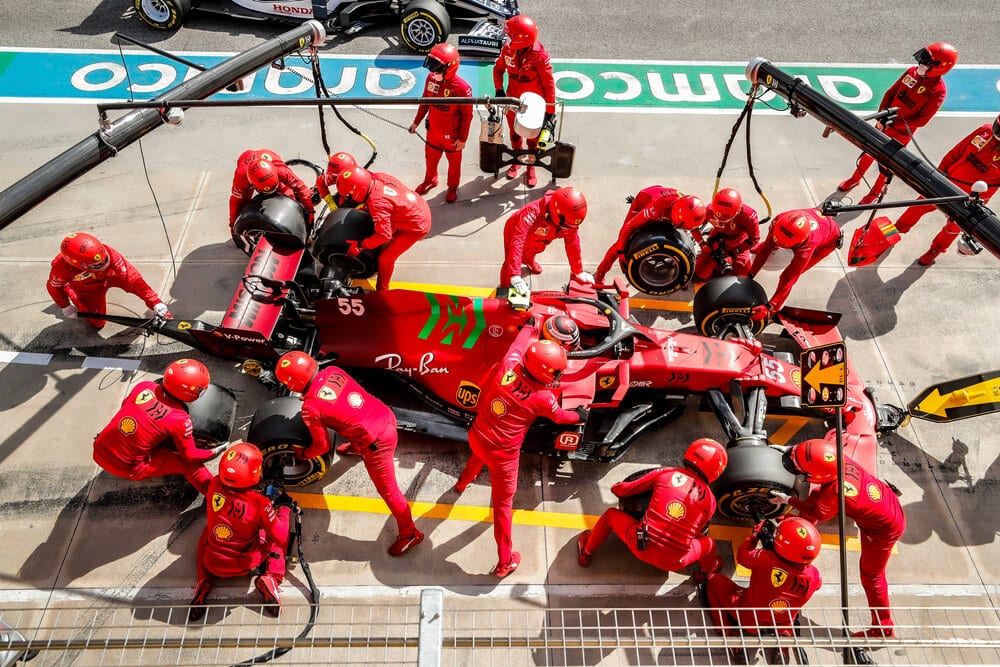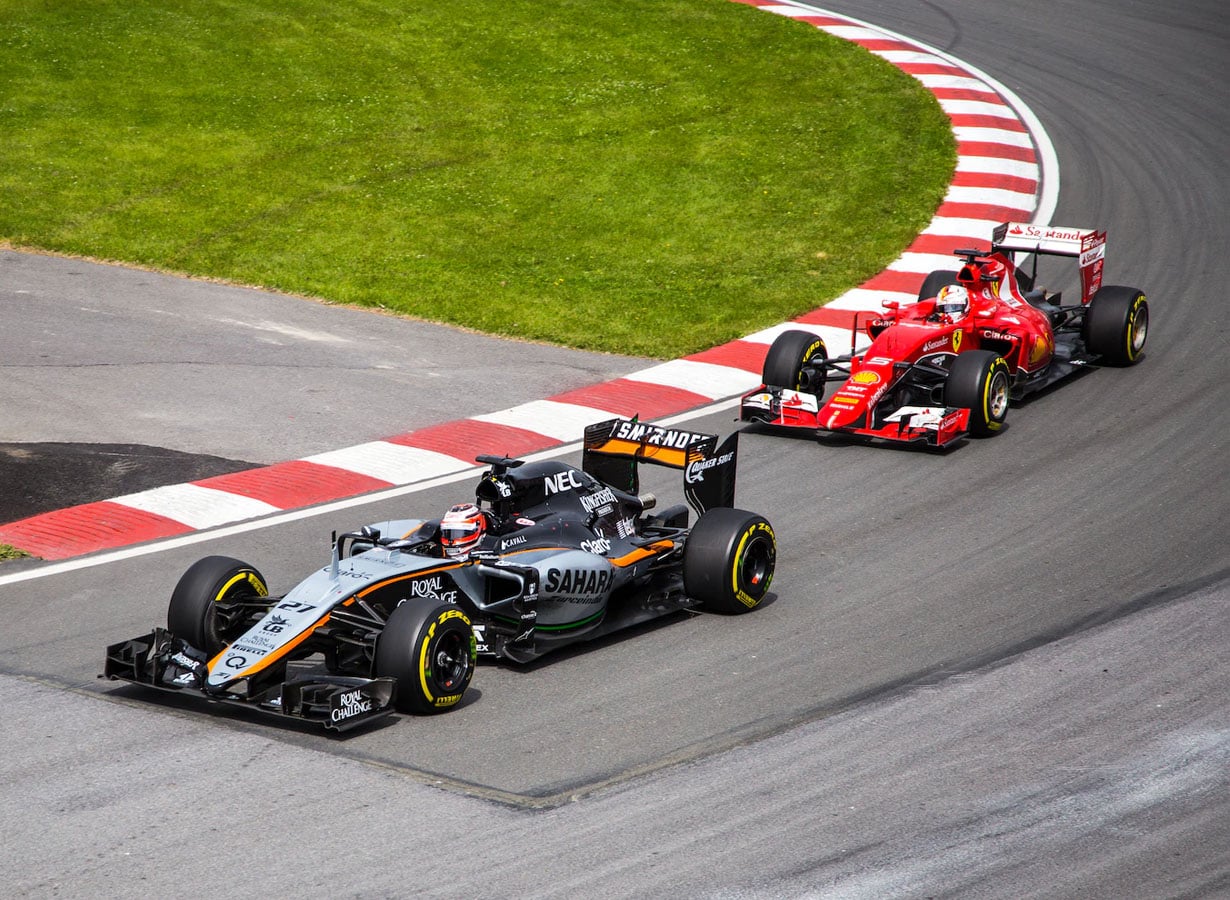In the high-speed world of Formula 1, every fraction of a second counts. But what happens when a driver goes too fast and surpasses the limits set by the race officials?
This is where the term ‘overcut‘ comes into play. Let’s dive into the world of Formula 1 strategy and tactics as we explore the ins and outs of the overcut and its impact on the race.
Table of Contents
Watch this video to learn more about undercut vs overcut.
What is an Overcut in F1?
A driver performs an overcut in Formula 1 when he stays close to the car in front and drives an extra lap or two when the car in front enters the pit. The goal is to catch up and build up a lead before your own pit stop and then get out in front of the previous leader.
Key takeaways
- Pit stops are one of the most important elements of the Formula One races as this is where the cars change their tires to get fresher ones. It is also in this place that the car loses some of its time.
- Before going into a pit stop, drivers need to come up with a strategy that will involve them to make up for the time that will be lost during the pit stop session.
- One of the strategies used by the driver is that of overcut. This strategy involves the chasing car letting the car in front of them finish the pit first. While the two cars are pitting, the chasing car tries to maintain a reasonable distance between the two cars so that the car in front of it stays ahead of it even after both cars cross the pitstop.
- Overcut is not the most used strategy in Formula One races as it is dependent upon several factors such as temperature, tire performance, and type of tracks which is harder to achieve by the car.

Understanding Overcut
Overcut is a term used to define a strategy adopted by the driver when he allows the car in front of it to finish the pitstop first. Overcutting happens when the driver finishes a lap or two later than the car in front of it. The car that has adopted the overcutting strategy now tries to drive at high speed behind the leading car in hopes of closing the gap between them. This car can do this much easier as there is clean air left by the leading car in front of them.
The main goal behind adopting this strategy is that while the leading car is in the pitstop driving, the chasing car gives its all and pushes itself to create a gap between itself and the leading car when it rejoins the race. The leading car drives a lap or more trying to get their tires to the right temperature. The car that is performing the overcut strategy tries to take advantage and gain back its original leading position. The former leading car is not able to maintain its position for an extended time as its tires have worn out.
Overcutting is used when safety cars are deployed onto the race tracks. However, every car on the race track has a marginal advantage as they all are bunched up together. The car just behind the safety car pits right before the safety car goes off the track. Hence, when the car comes out of the pit, he is driving on relatively less worn-out tires, because of which he can gain back his lost position or even better.
Before going into a pit stop, drivers need to come up with a strategy that will involve them to make up for the time that will be lost during the pit stop session.
The difference between undercut and overcut
The undercut is the most used strategy adopted by drivers during Formula One races. It involves the driver pitting sooner than the car in front of it so that it can benefit from fresher tires and create faster lap times. They do this by closing the gap between the car that is in front of them. They can do so as the car that is in front of them is going slow due to older tires.
Undercut relies on the advantage of putting fresh tires on the car and on the fact that the car in front of it will not pit in the very next lap. This strategy involves paying attention to the tire performance of the car in front of them. If the car that will be performing the undercut has started to lose time due to tire degradation, it is much more likely that the car in front of them is also losing time.
The strategy regarding undercut involves the car performing the strategy to pit before the car in front of it does. Then the car that pitted uses its extra grip on the new tires to make up for the time lost due to the change of tires and gain the leading position.
In contrast, the overcutting strategy involves the chasing car letting the car in front of them finish the pit first. While the two cars are pitting, the chasing car tries to maintain a reasonable distance between the two cars so that the car in front of it stays ahead of it even after both cars cross the pitstop. This car can do this much easier as there is clean air left by the leading car in front of them. Read more about the difference between undercut and overcut in Formula 1.
Important factors for success
Undercut is not the most used strategy in Formula One. This is because of several important factors that are needed to be considered so that this strategy could reach successful completion. One of the important factors to consider is tire performance. The undercutting strategy relies so much on the tire condition of both, the leading and chasing cars.
The chasing car needs to ensure that the car in front of them has softer tires before they pit or they have life left in their tires so that they do not need to change their tires for at least a few more laps.
Knowing the tire performance of the car in front of them serves as an advantage to the car chasing as they know that the car in front of them will be pitting soon. They can push harder to create a gap between the two cars.
The other factor that the driver performing the undercut strategy needs to keep in mind is time management. This is because the chasing car will not pit soon after the leading car and will try to manage its tires for as many laps as possible. This will build up a gap, but the chasing car will come out of the pit behind the leading car. However, the chasing car at this point has fresher tires which he can use to gain an advantage.
For this strategy to work out, managing time is very important as the original leading car can try to combat this strategy by keeping up its pace and managing the gap. This will allow them to overtake the car in front of them when they pit or shortly after due to them having fresher tires at the right temperature.
Frequently asked questions about Double-stack pit stops
Does overcutting in F1 always work?
Is undercut or overcut best in Formula One?
Is overcut the most common pit stop strategy in Formula 1?
Why does an overcut work in Formula One?
Conclusion
Formula One pit stops are one of the fastest elements in all of the races. This is because more than twenty mechanics are working to change the tires of the cars in around two seconds. However, it’s not just the mechanics that require a strategy to save time. Drivers and their teams also need to come up with a strategy to identify when to use a pit stop.
Tire wear and tear is the crucial element considered in designing a strategy for a pit stop. Keeping in mind this element of the pit stop, drivers used to undercut and overcut to design their strategies, Undercut is used to close the gaps between the chasing car and the leading car by delaying the time for the chasing car to go into the pit. However, both of these strategies, undercut or overcut, are dependent upon time management and carefully weighing the risks during the race.
Article sources
Learn more about Formula One
Want to learn more about F1? Then visit our Formula 1 glossary and dictionary.



